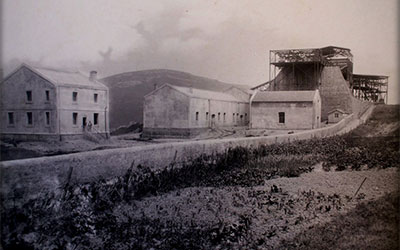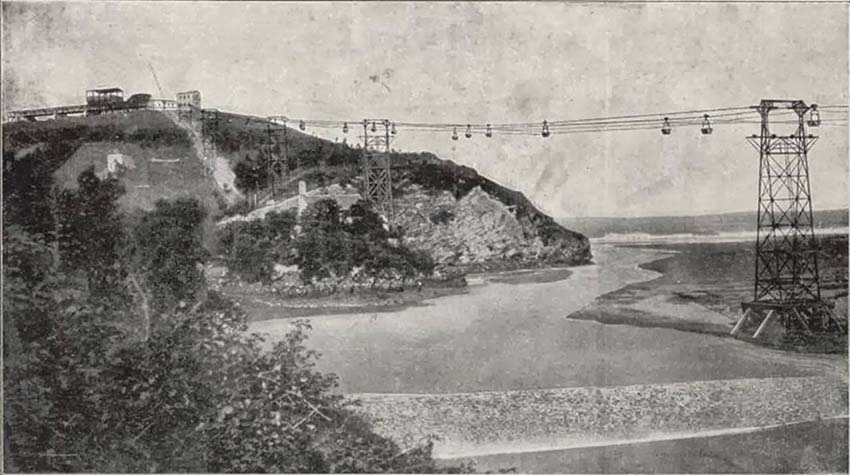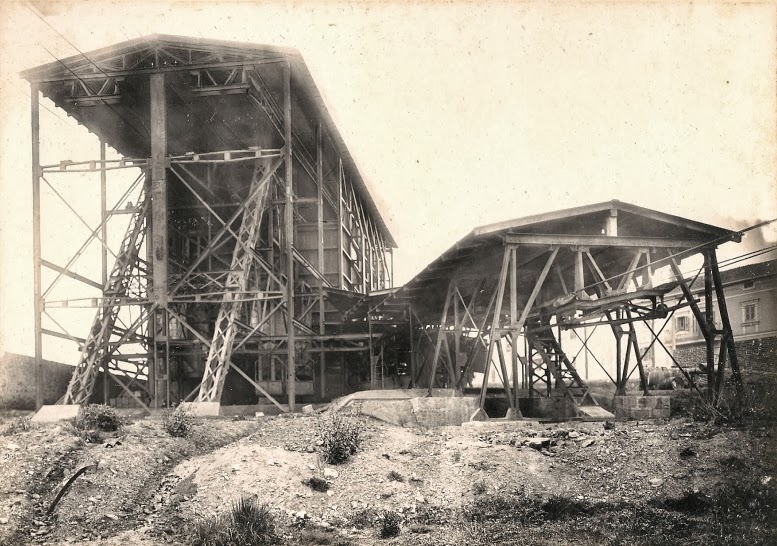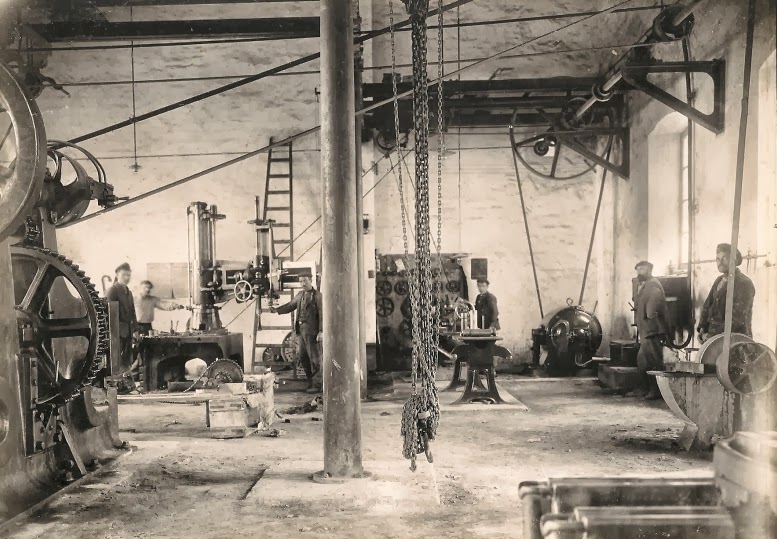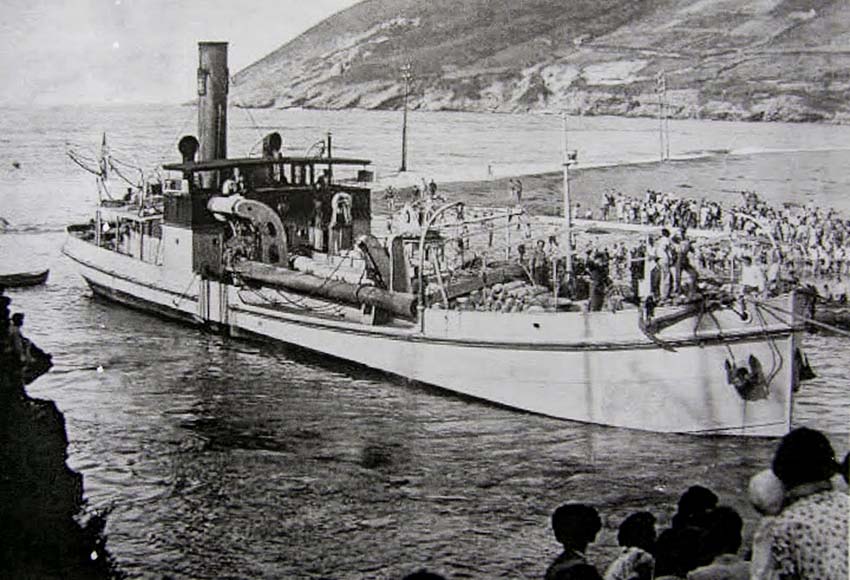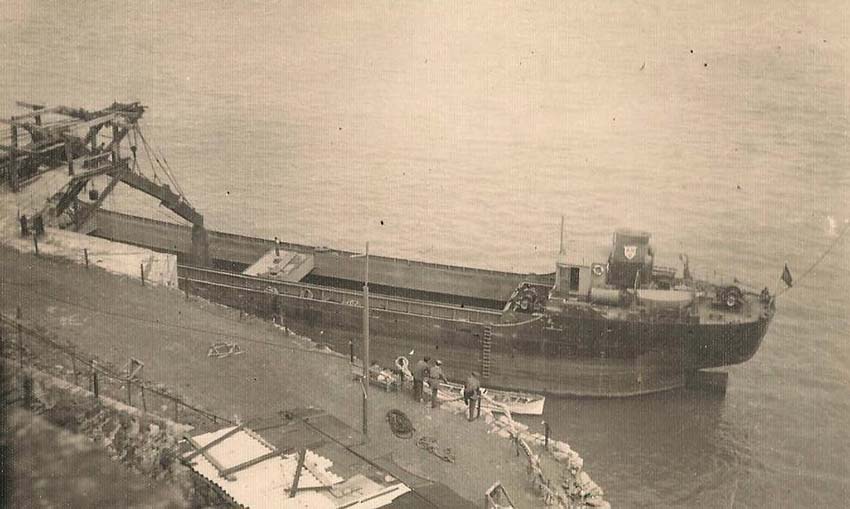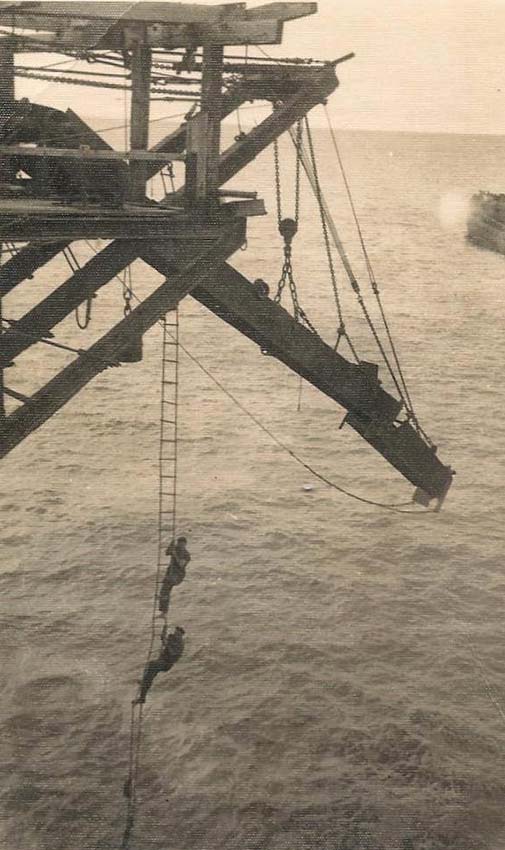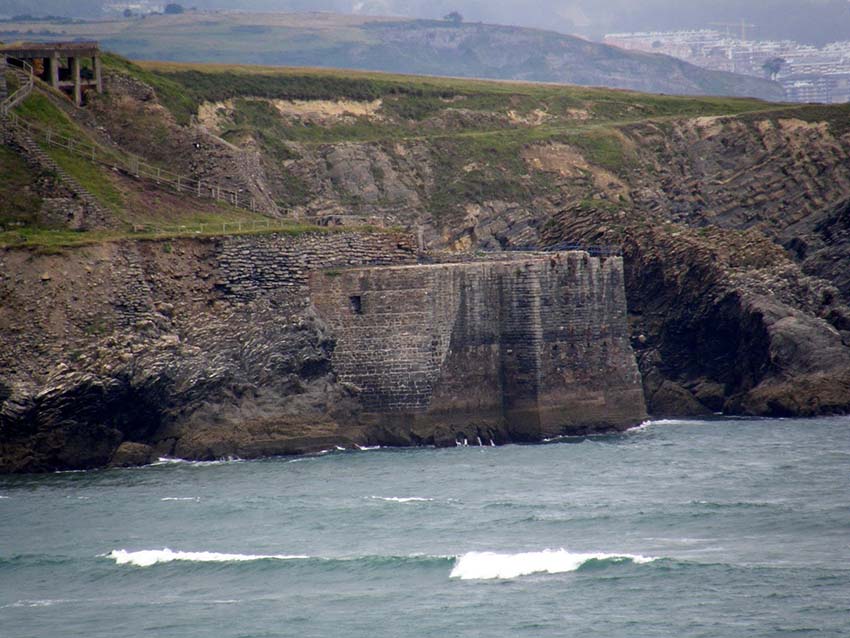Extension 1_ Mining remains between Kobaron and Pobeña
 Route: 10 km from Ortuella
Route: 10 km from Ortuella
If you are travelling by car you can park both at Pobeña (the ascent route) and Kobaron (the downhill route). If you do not want to return by the same route, there is a public bus service linking the two neighbourhoods every 2 hours. Apart from the natural landscape facing the Cantabrian sea, this area holds 3 mining landmarks:
- The old washery of the Orconera company, endpoint of the longest aerial tramway in Europe in 1910.
- The transport system and loader known as El Castillo (the castle), for shipping from the Kobaron mines owned by Joseph MacLennan.
- The mines in Kobaron that extend into the neighbouring province of Cantabria.
During the walk, you will see mural panels that explain the walks in the area, the work related to the collection of algae, the geological history and the marine species of this coast.
ORCONERA ORE WASHERY
The largest line of buckets of Europe at the time
By 1908 the Orconera Iron Ore company decided to use the "txirtas" that had been disregarded by the late nineteenth century mines, which took only the rich vein of iron ore and left countless heaps of rubble in the form of embankments. Due to the shortage of water at the top of the mountains of Triano and La Arboleda, they decided to create a washery on the Campomar hill and make use of sea water. So they built the largest line of buckets of Europe at the time, and for over thirty years they brought down the "dirty" ore from Mount Triano and returned the "clean" ore to be loaded onto ships, after a long journey, at the loaders in the river. The line was 8 km long, and the load carried by the bucket carriers was about 1,400 tons per day with a speed of 2.5m per second.
At the time it was the largest, most complex aerial tramway in Bizkaia. It was designed by the company Adolf Bleichert and Co. of Leipzig, although the metal parts, the gantries and the stations were built by La Basconia (Basauri).
The creation of this line of buckets and the washery meant the transformation of Pobeña, with the arrival of dozens of workers, the construction of houses and the creation of what is now a salt marsh, which was a huge reservoir to retain mud thus enclosing the old sand bank.
Washing the "txirta" (ore mixed with earth and clay) was done using abundant water and six trommels that got rid of the clay; eighteen "txirteros", or washer people, would work on "donkeys" (a kind of countertop), working all shifts, choosing the mineral and throwing away what was worthless. The washery had a warehouse, a workshop, an engine house, houses for wages clerks and guards and, in its final years, a small canteen. The whole tramway and washery had more than 200 people at one point, of which 100 worked in the Campomar facilities. It was in operation between 1910 and 1945 and was declared a Heritage Site in 2012.
More information (Spanish)
THE "CASTLE" LOADER
The stonework that remains of the old landing stage and the remains of the loading facilities is the only memory of this loader known as "El Castillo" (because there were artillery fortifications in the vicinity). Its work spanned from 1877 to 1963, the year in which mining activity in this area came to an end.
It was the first loader that shunned the protection of bays and river and was built next to the open sea and it was the only one in Bizkaia; others were built later on the nearby Cantabrian coast (Piquillo and Dícido).
Here they loaded the ore obtained in the nearby Kobaron mines owned by MacLennan. This is one of the reasons for its location; other reasons include the attempt to avoid paying port costs of the time in Bilbao, the attempt to avoid the frenetic activity of the port which could immobilize a ship for days given its navigational difficulties- the "Iron Quay" at Portugalete had not yet been built (walk 4)-, the total lack of capacity for collaboration between mining companies (note the proximity of the Orconera washery a few metres further up this hill) and the fact that, for most of the mining era, the ore was bound for steelmakers in Durham, in the north of England and not for companies in Bizkaia (a market that was only supplied from 1945).
The construction and subsequent use of this loader were very problematic. Work that took days was destroyed by the sea in a few hours (it collapsed twice) and the task of anchoring, docking, mooring, manoeuvring and loading the cargo on a ship was often a great feat.
It really is surprising that this point was chosen to load the ore, given the proximity of the cliffs, the tides that made it an impossible task for many hours of the day and the bad weather of the Cantabrian sea. In order to reduce the time the ships stayed near the headland, the initial configuration was expanded with successive work to end up using two floors simultaneously to minimize mooring at this point, which was so at the mercy of the waves.
More information (Spanish)
THE KOBARON MINES
Of all mines here, the most important were the ones belonging to the MacLennan company (the Amalia Vizcaína, the Demasía a Complemento and the San Francisco). The ore mined from 1873 was transported by 1m gauge railway, first to Pobeña and, from 1877, to the landing stage of El Castillo.
Mining ended in the area in 1963 with the closure of the loader.
Compared with the mines in the higher land around La Arboleda, here soon the richest ore was worked out and, as early as the 1880s, the rich surface hematite was gone. In fact, in this mine they worked large seams of carbonates (siderites) up to 15 metres deep; because it was a low-grade ore (below 50% iron), it was subjected to washing and calcination processes in outdoor kilns. In fact this area was innovative in techniques that were taken up later in the large mines and made it possible for mining in Bizkaia to continue its work decades after the highest concentrations of ore were finished.











